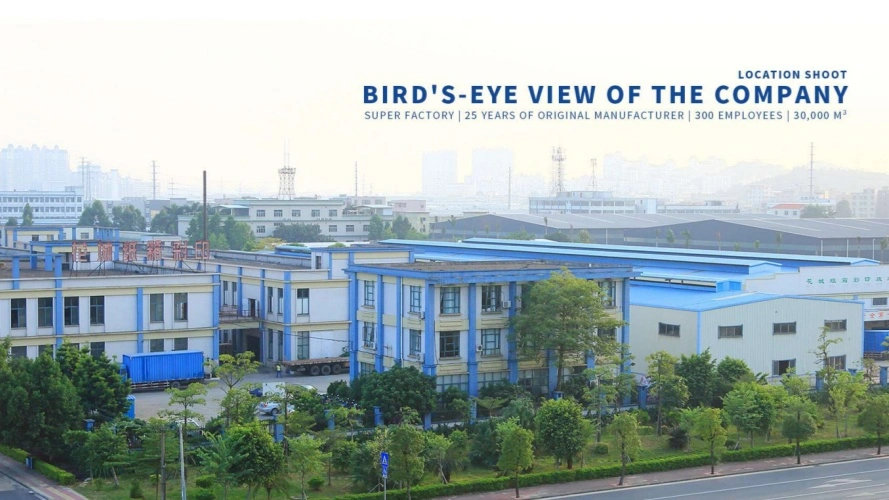Kraft Paper Bag vs Laminated Paper Bag: Which Is More Sustainable
Every day, businesses face a critical packaging decision that directly impacts their environmental footprint and brand perception. You're standing at the crossroads between choosing kraft paper bags with their natural, eco-conscious appeal and laminated paper bags offering premium aesthetics and durability. The kraft paper bag wins the sustainability debate hands-down. Made from unbleached wood pulp, kraft bags are fully recyclable, biodegradable within weeks, and compostable without harmful byproducts—while laminated alternatives carry a plastic coating that complicates recycling and extends decomposition time. This comprehensive guide reveals the environmental truth behind both options, helping you make packaging choices that align with your sustainability goals while meeting your functional needs.

Understanding Kraft Paper Bag Material and Environmental Benefits
The kraft paper bag represents one of the most environmentally responsible packaging solutions available today. Derived from unbleached softwood pulp through a specialized kraft pulping process, these bags maintain their natural brown color and distinctive fibrous texture that consumers immediately associate with sustainability. The manufacturing process deliberately retains a higher concentration of cellulose fibers, creating exceptional tensile strength, tear resistance, and abrasion resistance that allows kraft bags to carry substantial weight without failure. These natural kraft paper bags offer high load-bearing capacity while remaining completely biodegradable, breaking down naturally in composting environments within a matter of weeks rather than the hundreds of years required for plastic alternatives. What sets the kraft paper bag apart from other packaging options is its complete lifecycle sustainability. The raw material comes from renewable forest resources that can be responsibly managed through certified forestry programs. Trees absorb carbon dioxide during growth, effectively sequestering carbon that remains stored in the paper fibers throughout the bag's useful life and even during decomposition. Furthermore, kraft paper bags can be recycled five to seven times before the fibers lose their structural integrity, extending the environmental benefits through multiple product lifecycles. The recycling process for kraft paper bags is straightforward and widely supported by municipal recycling programs because the material is rarely contaminated by mixed materials. This recyclability advantage becomes particularly significant when considering that kraft paper bags are accepted in nearly all paper recycling streams, whereas many laminated alternatives are rejected due to their composite construction.
-
Production Process and Resource Efficiency
Manufacturing kraft paper bags involves a well-established industrial process that has been refined for over a century. The kraft pulping process uses chemical treatment to break down wood chips into individual cellulose fibers while removing lignin and other binding compounds. While this process does require significant energy and water inputs—studies indicate that producing 1,000 paper bags requires approximately 1,004 gallons of fresh water—modern production facilities have made substantial improvements in resource efficiency. Many contemporary paper mills achieve energy self-sufficiency by burning lignin and other byproducts as biofuel, generating steam that drives turbines for electricity production. The excess heated water can serve as district heating for neighboring communities, dramatically improving the overall energy efficiency of the kraft paper bag production process. The kraft paper bag manufacturing process also produces fewer toxic emissions compared to plastic bag production, despite requiring more initial energy input. The natural chemistry of wood pulp processing uses compounds that break down naturally in wastewater treatment systems, whereas plastic manufacturing involves petrochemical derivatives that persist in the environment. Additionally, advances in closed-loop water systems have reduced average water intake by more than forty percent since the 1990s, with modern facilities returning approximately ninety percent of process water back to the environment after purification. For businesses seeking FSC-certified kraft paper bags, the sustainability credentials extend backward through the supply chain to ensure that every tree harvested comes from responsibly managed forests that maintain biodiversity, protect wildlife habitats, and support local communities.
Laminated Paper Bags: Construction and Environmental Trade-offs
Laminated paper bags represent a hybrid packaging solution that bonds kraft or white paper substrates with a thin plastic film—typically BOPP (Biaxially Oriented Polypropylene), PET (Polyethylene Terephthalate), or polyethylene coatings. This lamination process creates a smooth, glossy surface that dramatically enhances visual appeal while providing functional benefits like moisture resistance, grease protection, and improved structural stability. The laminated surface supports high-definition printing with vibrant colors and specialty finishes including spot UV coating, foil stamping, embossing, and matte or glossy varnishes. Luxury retailers, cosmetics brands, and high-end gift packaging applications frequently choose laminated paper bags because the premium aesthetic instantly elevates perceived product value and creates memorable unboxing experiences that reinforce brand identity. However, the environmental profile of laminated paper bags becomes significantly more complex than their kraft paper bag counterparts. The bonded plastic film layer fundamentally changes the material's end-of-life options because most recycling facilities cannot effectively separate the paper and plastic components. This composite construction means laminated bags are typically rejected from paper recycling streams and directed to landfills where they persist far longer than unlaminated kraft alternatives. While the paper substrate might theoretically biodegrade, the plastic lamination creates a barrier that dramatically slows decomposition and can leave persistent plastic fragments in the environment. Some manufacturers now offer laminated paper bags with water-based coatings or biodegradable film alternatives, but these options remain less common and typically carry higher production costs that impact overall affordability for businesses operating on tight margins.
-
Functional Performance and Use Case Considerations
The decision between kraft paper bags and laminated alternatives often hinges on specific functional requirements and intended applications. Uncoated kraft paper bags excel in applications where natural aesthetics, breathability, and complete recyclability are paramount. Grocery stores, bakeries, farmers markets, and organic product retailers favor brown kraft paper bags because the natural appearance reinforces environmental messaging while the material's porosity allows fresh produce and baked goods to breathe, preventing moisture accumulation that can accelerate spoilage. The high tensile strength of kraft paper bags makes them ideal for carrying heavy items up to forty pounds when properly constructed with reinforced handles and gusseted bottoms. However, the material's primary limitation is vulnerability to moisture—uncoated kraft readily absorbs water and loses structural integrity when wet, making these bags unsuitable for rainy conditions or applications involving damp products. Laminated paper bags address the moisture vulnerability through their protective plastic coating while maintaining the structural advantages of paper substrates. Food service applications particularly benefit from this water resistance when packaging items with grease, oils, or condensation. The smooth laminated surface also provides superior printability for complex brand graphics, gradient color transitions, and photographic images that would appear less vibrant on the textured surface of kraft paper. Premium retailers use laminated paper bags to create luxury shopping experiences where the packaging itself becomes a brand statement and marketing tool. The enhanced durability of laminated construction supports repeated reuse, with high-quality laminated bags often serving as semi-permanent shopping totes that extend brand visibility long after the initial purchase.
Comprehensive Sustainability Analysis for Kraft Paper Bag Solutions
When evaluating the true environmental impact of kraft paper bag options versus laminated alternatives, businesses must consider the complete product lifecycle from raw material extraction through end-of-life disposal. Life cycle assessment studies reveal that kraft paper bags carry a higher environmental burden during initial production compared to plastic alternatives, consuming approximately 3.5 times more energy and generating seventy percent more air pollution during manufacturing. However, this production impact must be balanced against the drastically different end-of-life scenarios. A discarded kraft paper bag biodegrades completely within weeks to months in composting conditions, returning organic matter to the soil without leaving persistent pollutants. The same bag can potentially be recycled multiple times before reaching end-of-life, with Europe achieving an 83.2% recycling rate for paper packaging that keeps material circulating in the economy rather than accumulating in landfills or natural environments. The sustainability calculation shifts dramatically when considering reuse patterns and disposal behaviors. Research indicates that kraft paper bags must be reused three times to compensate for their higher production footprint compared to single-use plastic bags. This threshold is readily achievable given the durability of well-constructed kraft paper bags and consumer preference for retaining attractive paper shopping bags for secondary uses. Many households accumulate kraft bags for garbage liners, storage, craft projects, and future shopping trips, effectively extending the useful life and amortizing the production impact across multiple use cycles. Furthermore, the kraft paper bag offers psychological and behavioral advantages in promoting sustainable consumption patterns. The visible, tangible nature of paper bags makes their environmental credentials immediately apparent to consumers, reinforcing eco-conscious shopping behaviors and brand loyalty among environmentally aware customer segments.
-
Material Options and Customization for Sustainable Kraft Packaging
Modern kraft paper bag manufacturing offers extensive material options that allow businesses to optimize for specific performance requirements while maintaining sustainability credentials. Premium SBS C1S (Solid Bleached Sulfate, Coated One Side) paperboard provides a bright white appearance with exceptional printability on the coated surface while maintaining functional versatility on the uncoated reverse side for glue adhesion. This material choice suits high-end retail applications where vibrant color reproduction and specialty finishes like foil stamping and embossing create luxury presentation. For double-sided print requirements, SBS C2S delivers smooth, high-gloss surfaces on both faces with superior stiffness and structural integrity. Both SBS options are produced from 100% virgin bleached pulp, offering food-safe properties and FSC certification for applications requiring the highest hygiene and sustainability standards. Cost-conscious applications benefit from CCNB (Clay Coated News Back) paperboard that incorporates recycled fibers to reduce environmental impact and production costs while maintaining reliable performance. The white clay-coated front surface accepts high-quality printing, while the grey recycled back provides structural strength without compromising functionality. This kraft paper bag material option particularly appeals to brands emphasizing circular economy principles and demonstrable recycled content in their packaging. For maximum environmental authenticity, brown kraft paper retains its natural unbleached color and visible fiber texture, creating rustic, organic aesthetics ideal for artisanal products, handcrafted goods, and vintage-style brands. The natural brown kraft paper bag format has become synonymous with sustainable packaging in consumer perception, making it a powerful visual signal of environmental responsibility that requires no additional marketing explanation.
Professional Production Capabilities and Quality Assurance
Manufacturing high-quality kraft paper bags requires sophisticated production equipment and rigorous quality control protocols to ensure consistent performance across large volume orders. Advanced printing technologies including offset printing, flexographic printing, and digital printing enable precise color reproduction and fine detail resolution on kraft substrates. CMYK four-color process printing reproduces nearly the full visible spectrum through overlapping cyan, magenta, yellow, and black ink plates, ideal for photographic images and complex graphics on kraft paper bags. For brand-critical color matching, Pantone Matching System (PMS) spot colors deliver exact, repeatable hues using standardized premixed ink formulas that ensure corporate colors remain consistent across production runs and over time. Specialty printing techniques like UV coating, matte or gloss varnishing, hot foil stamping, embossing, and debossing add tactile dimension and visual interest that elevate kraft paper bags from functional packaging to memorable brand experiences. Surface finishing options enhance both aesthetics and functionality of kraft paper bags. UV coating applies a clear polymer layer that creates high-gloss shine while providing scratch resistance and moisture protection without fully laminating the substrate. Matte varnishing delivers sophisticated low-sheen appearance with smooth hand feel that appeals to luxury brands seeking understated elegance. Aqueous coatings offer environmentally friendly alternatives to plastic lamination with good moisture resistance and compatibility with standard recycling streams. Die-cutting uses custom metal dies to create precise shapes, windows, and decorative elements, while specialized handle options including twisted paper handles, cotton rope handles, satin ribbon handles, and die-cut integrated handles provide ergonomic carrying solutions matched to specific aesthetic and functional requirements. Modern automated production lines integrate printing, finishing, die-cutting, and assembly operations to deliver finished kraft paper bags with consistent quality and efficient turnaround times.
-
Ordering Process and Production Workflow
Professional kraft paper bag suppliers establish streamlined ordering processes that guide clients from initial concept through final delivery. The process typically begins with demand consultation where customers communicate specific requirements including dimensions, material preferences, printing designs, finishing options, handle styles, and order quantities. Business managers conduct detailed content docking to ensure complete understanding of client needs and translate conceptual requirements into technical specifications. Solution design phase develops comprehensive proposals incorporating material recommendations, structural engineering, artwork optimization, and production timelines based on available equipment capabilities and capacity. Professional implementation involves sample production according to customer specifications, allowing thorough evaluation of materials, printing quality, structural integrity, and overall aesthetic before committing to full production runs. This iterative refinement ensures that finished products meet exact expectations and performance requirements. Once customers confirm sample approval, orders proceed to full-scale manufacturing through established production workflows. The printing stage transfers designs onto paper using offset, digital, or flexographic presses optimized for the specified substrate and ink systems. Surface finishing operations apply coatings, varnishes, or lamination as specified. Die-cutting uses precision metal dies to cut shapes, create windows, and trim edges. Gluing and assembly operations fold and bond components to form completed bags. Final packing and shipping stages stack, bundle, and carton finished products, then palletize and dispatch to clients according to agreed delivery schedules. Quality control inspections at each production stage ensure consistent adherence to specifications and identify any defects before products reach customers.
Conclusion
Kraft paper bags deliver superior sustainability through biodegradability, recyclability, and renewable material sourcing, while laminated options sacrifice environmental benefits for enhanced moisture protection and premium aesthetics. Your packaging choice ultimately depends on balancing functional requirements, brand positioning, and environmental commitments.
Cooperate with GUANGZHOU FETCHING COLOR PRINTING & PACKAGING LTD.
Since 1999, GUANGZHOU FETCHING COLOR PRINTING & PACKAGING LTD. has manufactured premium kraft paper bags with ISO14001, ISO9001, FSC, and Disney certifications across our 30,000㎡ facility. Our 300+ employees operate advanced Heidelberg XL162-6L presses and automated die-cutting equipment to deliver customized solutions for food, cosmetics, and retail brands. As China kraft paper bag manufacturer, China kraft paper bag supplier, and China kraft paper bag factory offering wholesale kraft paper bag for sale at competitive kraft paper bag price, we provide High Quality kraft paper bag backed by over ten packaging engineers with extensive R&D experience. Partner with us to create sustainable packaging that elevates your brand identity. Contact public@fetchingprinting.com today to discuss your requirements and receive a customized quote.
References
1. European Paper Bag Consortium. "Environmental Benefits of Paper Carrier Bags: Carbon Sequestration and Recycling in Sustainable Packaging Systems." Journal of Sustainable Packaging Research.
2. Franklin Associates. "Life Cycle Assessment of Shopping Bag Alternatives: Comparative Analysis of Kraft Paper, Laminated Paper, and Plastic Bags." Environmental Impact Studies Division.
3. Forest Stewardship Council. "Responsible Forest Management and Paper Products: Certification Standards for Sustainable Kraft Paper Production." FSC International Standards.
4. Emergen Research Analysis Team. "Global Paper Bags Market: Growth Trends, Environmental Impact, and Consumer Preferences in Sustainable Packaging." Sustainable Packaging Market Report.

Based on your location and order quantity, you will have the opportunity to receive a limited time free shipping promotion!

Corporate Purpose
